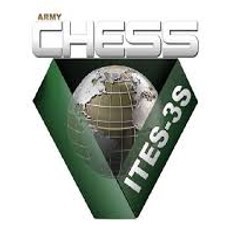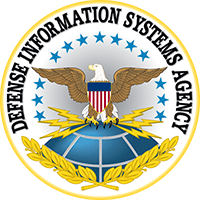The Iron Triangle is a legacy concept that stifles business innovation, creates artificial barriers to sustainable business transformation and is a key contributor to suboptimal performance in many business analysis and IT projects.
Within the last week alone, I heard the immutable law of the “Iron Triangle” invoked on at least two occasions. Clearly, the myth of the Iron Triangle continues to survive – and perhaps even thrives in many organizations!
I am compelled to write this post to set the record straight. My objective is to provide you with the knowledge to recognize, challenge and break through the myth of Iron Triangle to enable innovation and sustainable business transformation in your organization.
The Iron Triangle
An expression frequently associated with the Iron Triangle is “Better, Faster, Cheaper – pick any two.” For example, under the auspices of the Iron Triangle, you can provide your customer with a high quality product (better) and you can ship the product overnight (faster), but the customer should expect to pay a premium price (not cheaper). In other words, you can achieve any two of the three variables, but you cannot achieve all three.
More specifically, there is a tradeoff among better, faster, cheaper – sometimes referred to as the elastic triangle. For example, if you want to provide more quality (better), then some blended tradeoff of faster and/or price is required. Or, if you want to offer a lower price point, then some blended tradeoff of better (less quality) and/or faster (more slowly) is required.
The concept of the Iron Triangle comes in a variety of flavors across industries and organizations. However, the core concept is rigid tradeoffs (hence the concept of the triangle – the most rigid structural element in construction) among three (although it could be more than three) interrelated variables.
The Myth
The rigidity of the interrelated variables of the Iron Triangle is a myth. It’s a legacy concept that pre-dates today’s business practices and enabling technologies. Today, organizations can – and to be competitive must, be better, faster and cheaper – achieve all three!
In other words organizations must provide higher levels of quality, with faster response times at increased levels of efficiency. Organizations that continue to harbor the myth of the Iron Triangle risk becoming obsolete in the market place – industry dinosaurs.
I see it every day. Organizations that break through the myth of the Iron Triangle become agile, scalable, high-performing organizations. The dinosaurs either achieve organizational renaissance via transformational business processes reengineering or are acquired, deconstructed and folded into nimbler more innovative organizations.
Reframing the Concept
To break through the myth of the Iron Triangle, the concept needs to be reframed. “Better, Faster, Cheaper” is cute and intuitive – it’s the traditional way to express the concept. However, it’s too simplistic and obfuscates the underlying principles.
The underlying principles are effectiveness and efficiency. I like to refer to these as the big “E” (effectiveness) and the little “e” (efficiency). Effectiveness is about value creation – the creation of customer and business value via you and your organization’s products and services.
The big “E” (effectiveness) distills down to four basic questions: 1) Who are my customers (internal and/or external); 2) What are my products and/or services; 3) What do my customers want from my product and services (quality, customer service, functionally, etc.); and 4) What are my customers willing to pay for my products and services (based on levels of quality, customer service, functionality, etc.)?
The little “e” (efficiency) is about delivering effectiveness (at the defined service levels) in the most economical manner. Efficiency is maintaining the defined / agreed levels of effectiveness while reducing cost.
Efficiency and cost reduction are not the same concept. Cost reduction is lowering the defined levels of effectiveness to reduce costs. It’s a valid strategy – if your levels of effectiveness are set at levels higher than the value recognized by your customer (i.e. your customer is not willing to pay more for the higher levels).
Breaking Though the Myth
To break through the myth of the Iron Triangle, shift your frame of reference from a rigid (or elastic) tradeoff among the three interrelated variables (e.g. Better, Faster, Cheaper) to a frame of reference focused on optimizing the big “E” and the little “e”.
Price is a proxy for effectiveness. Cost is a proxy for efficiency. Price and cost are independent of each other.
Price is what your customers (internal and/or external) are willing to pay based on the value that you provide via your products and services. Cost is what it costs you to provide your products and services. The spread between price and cost, for the purpose of this discussion, is the business value that is created.
Herein lies the fallacy of the Iron Triangle. I maintain that an organization can improve effectiveness (improve value and therefore maintain higher price points) and simultaneously improve efficiency (provide the higher levels of effectiveness at lower costs).
Conversely, perpetuating Iron Triangle thinking leads to ineffective, inefficient organizations that become lumbering dinosaurs on their way to economic extinction. But, also, herein lies the opportunity. Organizations that “get” the concept of driving both the big “E” and little “e” simultaneously are positioned for innovation and profitable growth.
To Be Continued in Part II
In Part II, the concept of Agile Business Analysis is applied to breaking through the myth of the Iron Triangle for business and IT projects: Scope, Budget and Schedule.
Within the last week alone, I heard the immutable law of the “Iron Triangle” invoked on at least two occasions. Clearly, the myth of the Iron Triangle continues to survive – and perhaps even thrives in many organizations!
I am compelled to write this post to set the record straight. My objective is to provide you with the knowledge to recognize, challenge and break through the myth of Iron Triangle to enable innovation and sustainable business transformation in your organization.
The Iron Triangle
An expression frequently associated with the Iron Triangle is “Better, Faster, Cheaper – pick any two.” For example, under the auspices of the Iron Triangle, you can provide your customer with a high quality product (better) and you can ship the product overnight (faster), but the customer should expect to pay a premium price (not cheaper). In other words, you can achieve any two of the three variables, but you cannot achieve all three.
More specifically, there is a tradeoff among better, faster, cheaper – sometimes referred to as the elastic triangle. For example, if you want to provide more quality (better), then some blended tradeoff of faster and/or price is required. Or, if you want to offer a lower price point, then some blended tradeoff of better (less quality) and/or faster (more slowly) is required.
The concept of the Iron Triangle comes in a variety of flavors across industries and organizations. However, the core concept is rigid tradeoffs (hence the concept of the triangle – the most rigid structural element in construction) among three (although it could be more than three) interrelated variables.
The Myth
The rigidity of the interrelated variables of the Iron Triangle is a myth. It’s a legacy concept that pre-dates today’s business practices and enabling technologies. Today, organizations can – and to be competitive must, be better, faster and cheaper – achieve all three!
In other words organizations must provide higher levels of quality, with faster response times at increased levels of efficiency. Organizations that continue to harbor the myth of the Iron Triangle risk becoming obsolete in the market place – industry dinosaurs.
I see it every day. Organizations that break through the myth of the Iron Triangle become agile, scalable, high-performing organizations. The dinosaurs either achieve organizational renaissance via transformational business processes reengineering or are acquired, deconstructed and folded into nimbler more innovative organizations.
Reframing the Concept
To break through the myth of the Iron Triangle, the concept needs to be reframed. “Better, Faster, Cheaper” is cute and intuitive – it’s the traditional way to express the concept. However, it’s too simplistic and obfuscates the underlying principles.
The underlying principles are effectiveness and efficiency. I like to refer to these as the big “E” (effectiveness) and the little “e” (efficiency). Effectiveness is about value creation – the creation of customer and business value via you and your organization’s products and services.
The big “E” (effectiveness) distills down to four basic questions: 1) Who are my customers (internal and/or external); 2) What are my products and/or services; 3) What do my customers want from my product and services (quality, customer service, functionally, etc.); and 4) What are my customers willing to pay for my products and services (based on levels of quality, customer service, functionality, etc.)?
The little “e” (efficiency) is about delivering effectiveness (at the defined service levels) in the most economical manner. Efficiency is maintaining the defined / agreed levels of effectiveness while reducing cost.
Efficiency and cost reduction are not the same concept. Cost reduction is lowering the defined levels of effectiveness to reduce costs. It’s a valid strategy – if your levels of effectiveness are set at levels higher than the value recognized by your customer (i.e. your customer is not willing to pay more for the higher levels).
Breaking Though the Myth
To break through the myth of the Iron Triangle, shift your frame of reference from a rigid (or elastic) tradeoff among the three interrelated variables (e.g. Better, Faster, Cheaper) to a frame of reference focused on optimizing the big “E” and the little “e”.
Price is a proxy for effectiveness. Cost is a proxy for efficiency. Price and cost are independent of each other.
Price is what your customers (internal and/or external) are willing to pay based on the value that you provide via your products and services. Cost is what it costs you to provide your products and services. The spread between price and cost, for the purpose of this discussion, is the business value that is created.
Herein lies the fallacy of the Iron Triangle. I maintain that an organization can improve effectiveness (improve value and therefore maintain higher price points) and simultaneously improve efficiency (provide the higher levels of effectiveness at lower costs).
Conversely, perpetuating Iron Triangle thinking leads to ineffective, inefficient organizations that become lumbering dinosaurs on their way to economic extinction. But, also, herein lies the opportunity. Organizations that “get” the concept of driving both the big “E” and little “e” simultaneously are positioned for innovation and profitable growth.
To Be Continued in Part II
In Part II, the concept of Agile Business Analysis is applied to breaking through the myth of the Iron Triangle for business and IT projects: Scope, Budget and Schedule.
Subscribe to my blog | Visit our Knowledge Hub
Visit my YouTube channel | Connect with me on LinkedIn
Check out our Business Analysis Training Courses and Consulting Services




















